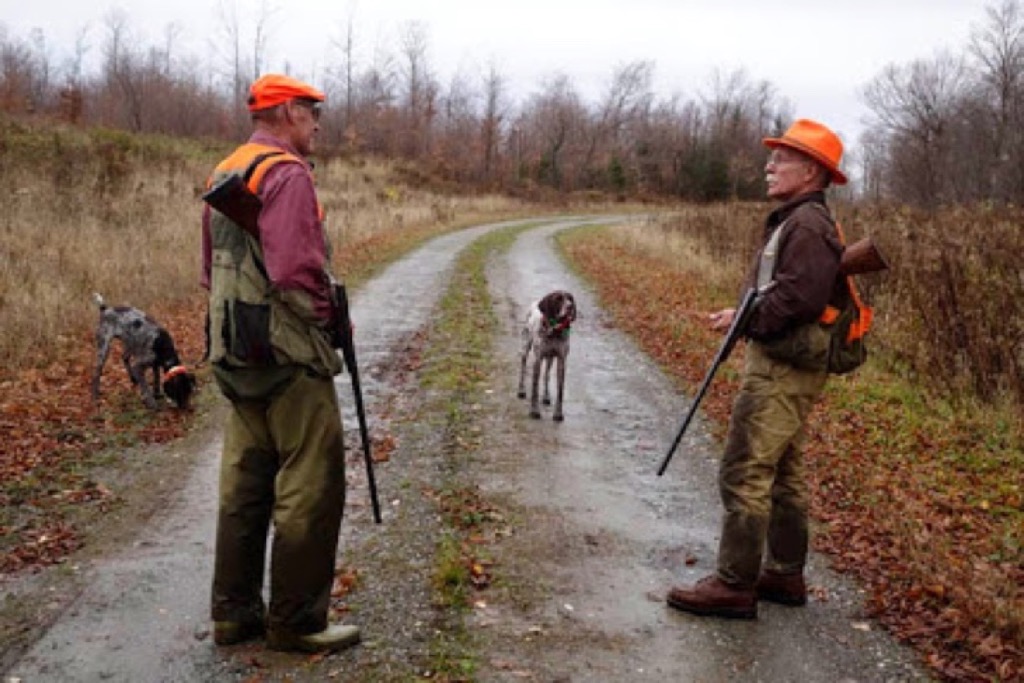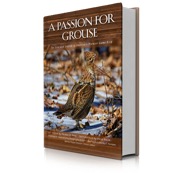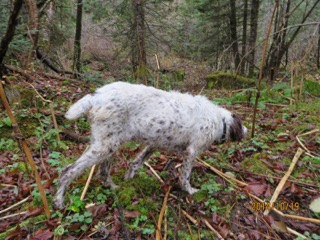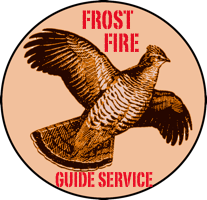Five Questions with Jerry Allen
In addition to being a noted author of several murder / mystery titles, Jerry also wrote an excellent piece on New England grouse hunting in the expansive tome on everything grouse and grouse hunting, A Passion For Grouse. Take it from me, he painted an excellent picture of what it's like to pursue grouse, especially in northern New England. For more information, check out Jerry's blog here.
Jerry graciously allowed me to pepper him with a few questions on grouse hunting, dogs, and his outlook on our sport of upland bird hunting, and ruffed grouse hunting in particular. Thanks Jerry for letting us get a glimpse inside your grouse hunting head!
_________________________________________________
Q: Jerry, you’ve been upland bird hunting for nearly five decades by my reckoning. What are some of the changes that you’ve noticed in your own hunting style and dog handling in that time?
A: I did start grouse hunting about five decades ago. My grandfather was the only hunter in the family, and unfortunately he died young, so I never actually hunted with him. He certainly must have made an impression though, because I always wanted to hunt. My grandmother used to spend hours reading Outdoor Life and Field & Stream to me. I loved the stories. A friend and his uncle in Maine taught me to hunt while I was in my late teens. And I will admit there was a ten year stretch, in my late thirties, where my life took me to the Caribbean where grouse do not live, but other than that, ruffed grouse have always been a passion.
When I started hunting it was just walking up grouse, but I have always loved dogs. In my early twenties I bought my first bird dog, a very stubborn male Brittany spaniel. He taught me a lot and I taught him little. Back in those days we had little information and I didn’t know anyone with a bird dog. Back then, every bird dog owner started with a copy of Richard Wolter’s book Gun Dog, which is what I did. Trainers were harder on the dogs in those days and more dogs lived in kennels. I think the training methods have improved and we get better results. We’ve become more patient and understand dogs far better. Now many dogs are treated almost as family members.
I keep thinking every dog I get is better than the one I had before, but it’s more likely that I am getting better at teaching the dogs and become more patient. Consistent training is the most important thing. Don’t let the dog get away with something once and then expect something different the next time.
Q: Speaking of dogs, you have enjoyed exploring the grouse woods behind a couple of different sporting breeds over the years. You are now a dedicated German Wirehaired Pointer man – can you describe your evolution to becoming a GWP owner and some of the differences from the other breeds that you have owned?
And all of my dogs have been females, after the Brittany. I have found them easy to train and smart, so why mess with success? I have only had one of my wires ever get quilled by a porcupine, and that was a minor event with maybe a dozen quills in the nose. My wires have pointed dozens of porkies and when I approach they turn to me as if to ask “What do we do with this?” I just say “heel” and lead them away. Too many male dogs have more machismo than I want to deal with.
Q: Without revealing too much information, do you have a favorite cover type that you like for grouse and woodcock hunting? Are they the same, or do you go to specific coverts to target either species?
A: Clearcuts are where it is at today for grouse cover. Some of the heavily logged country in northern New England is exceptional. And it is always changing, so it pays to constantly look for new cover. I like softwoods nearby and a source of gravel, it can be a logging road or small stream bed. Those glorious abandoned farms that you see in books and paintings are pretty much gone, and when you find one usually a hundred other hunters have found it too.
Woodcock are where you find them, and at times that can be anywhere. They too like the clearcuts with some softwood nearby, and preferably with damp ground. We have a lot of early successional forest in our area and I am thankful for that. Plan on doing lots of walking, that’s always my advice. If your legs don’t hurt by the end of the day you are not trying hard enough.
There’s a couple of alder flats I used to hunt. They can be very regular producers of woodcock, but it is nasty hunting. The dogs don’t seem to mind, and if you kneel down to their level and look at all the alder stems, they are hunting in an entirely different environment than we are. For upright humans it can be awful.
Most of the places I hunted back when I was young are now covered with homes. Cape Cod used to have spectacular bird and rabbit hunting, but it is all retirement homes and vacation homes now. I love that large tracts of land are now being preserved with conservation easements that prohibit the property from being developed. We need more of that. Those forests can still be harvested and used for recreation, but will never be chopped up for house lots.
Q: What is your opinion of where the sport of upland bird hunting is heading, particularly in the Northeast?
A: Upland hunting seems to be getting more popular. I worry that it might get too popular, but I still seldom see another hunter while I am out in the woods. We need the political clout that comes with numbers to preserve what the grouse need, so I hesitantly welcome the new hunters onboard. Please, let’s try to keep it a gentlemanly sport.
I sometimes joke that I wish people still dressed up with nice jacket and a tie to hunt. If you could see my tattered bird hunting clothes you’d know it was a joke. Landowners generally don’t mind bird hunters on their land and let’s work to keep it that way. Northern New England has a long history of landowners leaving their property open for others to enjoy. Sadly, as people from down country buy up the land for second homes, things are changing.
The enthusiasm of new hunters in infectious. It is fun to be around them and listen to their stories. Organizations like the Ruffed Grouse Society do wonders in educating the public and helping to manage land for wildlife. New Hampshire has a new Ruffed Grouse Society chapter and I wish them well. They have been meeting downstate, which is where their work is needed most.
Q: The New Hampshire grouse and woodcock seasons are just a little over two months away – what gets you excited about the coming bird hunting season?
A: I look forward to October all year long and this year is no different. There’s never a bad year, just some are better than others.
Most years I buy a new pair of boots in the summer and have them broken in by fall. The appeal of fancy electronics has eluded me. I do have an e-collar, but almost never have used it. Neither of the two dogs that I have now have ever had it on. I hunt with bells on my dogs, but I can understand how someone with a dog that ranges into the next county might want a GPS tracking device on their dog. My dogs might range a hundred yards in open country, but I seldom have trouble keeping track of them. In thick cover they hunt closer, they learn. Now that Brittany I had was a different story, but back then GPS hadn’t been dreamt up and if I had an e-collar I probably would have electrocuted him. I love the sound of the traditional old brass bells and do worry the day will come when I no longer can hear my dog’s bells. Then I would buy a tracking device.
Maybe I’m a bit of a cranky old New Englander, but it seems too many sports require more and more gear. At least the ads in the hunting magazines would have you think so. One of the biggest attractions of upland bird hunting used to be how little gear you need, particularly if you compare it with duck and goose hunting. We used to set over a hundred decoys.
I just carry a compass, matches in a waterproof container, a Leatherman tool, knife, and a few extra shells. That’s it. Back in the truck is a first aid kit and lunch. I get tired enough without carting all sorts of things with me.
It’s only a fool that predicts bird numbers, but I am very optimistic this year. We’ve seen a lot of broods during the last month, so things look great for this year. Most of the young birds are easily big enough to make it through some bad weather. Come October we will find out.



